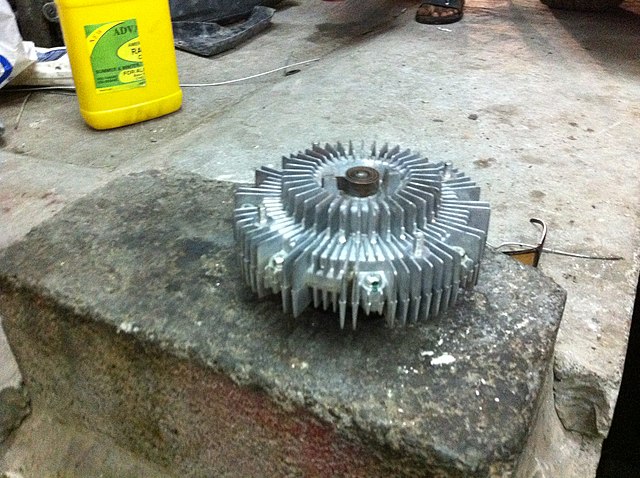 A fan clutch is a thermostatic device used in some older vehicles to control the engagement of the engine cooling fan. Unlike electric fans, which are directly powered by the battery and controlled electronically, fan clutches rely on engine heat and a special fluid to engage the fan. Here's how it works:
A fan clutch is a thermostatic device used in some older vehicles to control the engagement of the engine cooling fan. Unlike electric fans, which are directly powered by the battery and controlled electronically, fan clutches rely on engine heat and a special fluid to engage the fan. Here's how it works:
At low engine temperatures:
- The fan clutch remains disengaged. This allows the fan to spin freely or not spin at all, depending on engine speed and air flow. This saves engine power and allows the engine to warm up faster.
As engine temperature rises:
- A bi-metallic coil or wax capsule inside the clutch expands due to the heat.
- This expansion opens a valve, allowing silicone fluid within the clutch to flow.
- The fluid's movement creates a drag on the fan pulley, causing it to spin faster in proportion to the engine speed.
- This increased fan speed pulls more air through the radiator, cooling down the engine.
Once the engine temperature cools:
- The coil or capsule contracts, closing the valve.
- The fluid flow stops, and the fan slows down or disengages again.
Advantages of fan clutches:
- Improved fuel efficiency by saving engine power when cooling is not needed.
- Reduced noise compared to constantly running electric fans.
- Simpler and more reliable design compared to some electronically controlled systems.
Disadvantages of fan clutches:
- Slower response to sudden temperature changes compared to electric fans.
- Can fail and leave the engine running hot.
- Not as common in modern vehicles, replaced by electric fans with better control and efficiency.
Overall, fan clutches play a crucial role in maintaining proper engine temperature in older vehicles, balancing fuel efficiency and cooling needs. Although less common in modern times, understanding their function can help you diagnose potential issues and appreciate the advancements in cooling technology.